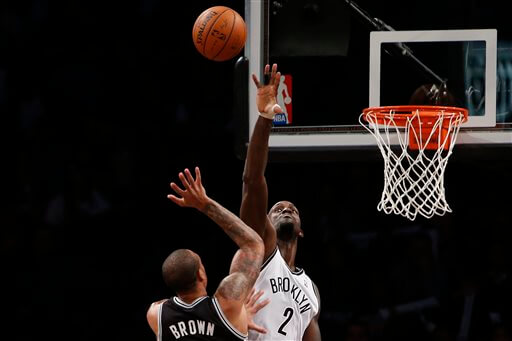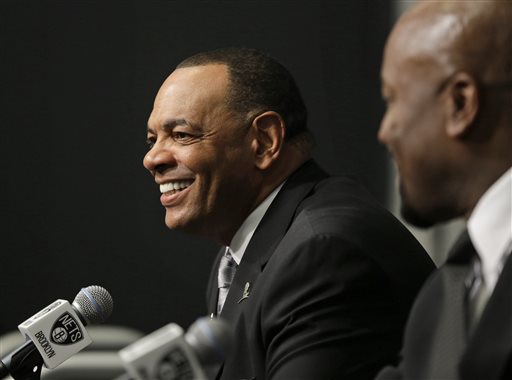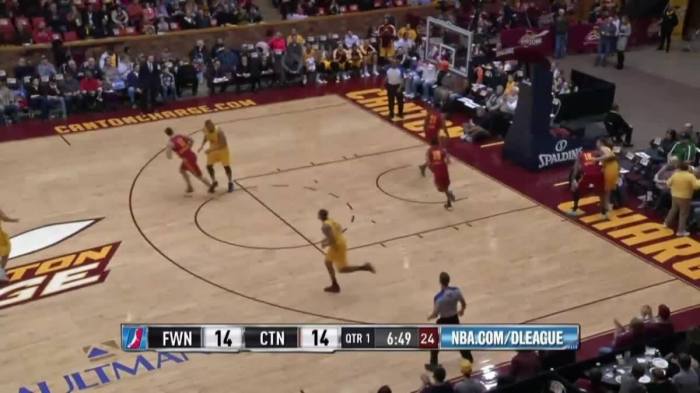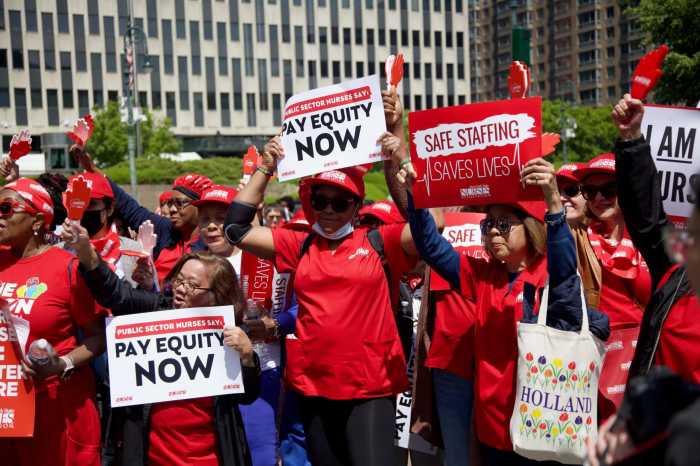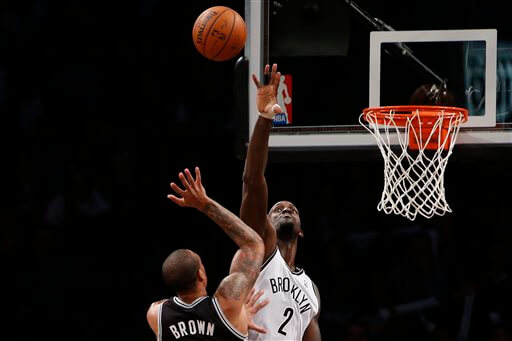
Kevin Garnett hasn’t come off the bench in an NBA game since January 27th, 1996. He’s started in 1,482 consecutive games, including the playoffs, since that day.
On a related note, new Nets coach Lionel Hollins said Monday afternoon that Garnett’s “earned the right” to be his starting power forward. He’ll flank Brook Lopez in a big lineup reminiscent of Hollins’s days in Memphis, when he started talented Zach Randolph and Marc Gasol, two talented big men. This comes after Garnett played much of last season at the center position, following Lopez’s season-ending foot injury.
Garnett doesn’t want to be known as a center. He’s open and vocal about his disdain for the center position. “Should’ve put that s— (not playing center) in my contract,” he joked back in January. He’s famously referred to as “six-foot-thirteen,” since being seven feet tall is often associated with a lumbering lack of skill. Garnett doesn’t want people to think he’s in the NBA just because he’s tall, but because he’s tall and he’s put in an unconscionable amount of work.
Garnett considers himself a power forward, a position that by definition requires more skill and versatility than the centers he grew up watching.
That’s precisely the problem: Garnett has a traditional vision of what a center is in today’s NBA. By being his power forward self, he’s better as a center.
The numbers don’t lie. Garnett switched to center in the 2014 calendar year, and with him on the floor as a center, the Nets played like the best defensive team in the league. That’s not an exaggeration, that’s fact: the Nets allowed a paltry 95.6 points per 100 possessions that Garnett played after he switched to center full-time, better than the league-best Indiana Pacers.
With Garnett off the floor, the defense plummeted to 105.9 points per 100 possessions, below league-average as good as the 22nd-best Dallas Mavericks.
Can’t see the chart? Refresh the page. Still can’t see it? Click here for the non-interactive image.
No player on the Nets was anywhere close to that impact, including Garnett himself at power forward, where he struggled playing further away from the basket. Garnett’s ability to roam the paint hasn’t waned even in his later years, nor has his nonstop communication on the floor: opponents took fewer shots in the paint with Garnett at center.
In truth, “center” itself is an outdated designation. When Garnett came up in the league, a center looked more like Shaquille O’Neal or the Rik Smits than Joakim Noah or Tyson Chandler. Today, the best NBA centers play more like power forwards, quick and versatile instead of slow and pounding.
So to do what he does best, Garnett’s got to fit into a hole he fits in perfectly, as long as he acknowledges that difference.
But Brook Lopez, barring health issues, is the team’s starting center. Not even Garnett’s changing that. So for Garnett to play primarily center, would he have to come off the bench, for the first time since his rookie season?
Starting Garnett makes managing his center minutes difficult, but not impossible. There’s limited flexibility: Garnett played only 20 minutes per game last season, and it’s hard to imagine him stretching much beyond that at 38 years old. Plus, he’ll likely play 4-6 minutes to begin the first and third quarters, when he’ll play next to Lopez. That’s not bad, either: the Garnett/Lopez combination allowed just 100.7 points per 100 possessions in about 250 minutes together, a better-than-league average number. You can thank Lopez’s improved defense for that.
But once Garnett’s subbed out, Hollins could tinker the rotations and stagger his and Lopez’s minutes, making the respective units a pound-it-in offense and a protect-the-paint defense.
It might be hard, but it’ll be much harder to make Garnett accept a bench role, particularly if Hollins is gifting it to him from the outset. Garnett is a future Hall of Famer, and pushing him to the bench, to a position he doesn’t want to play, seems anathema even for a $12 million paycheck. But it’ll be another test for Hollins: even when Garnett starts, how will he fit into a full-game vision?

